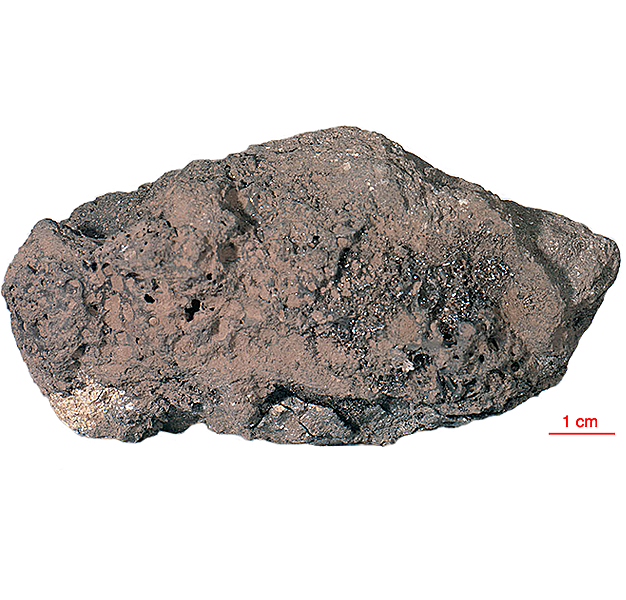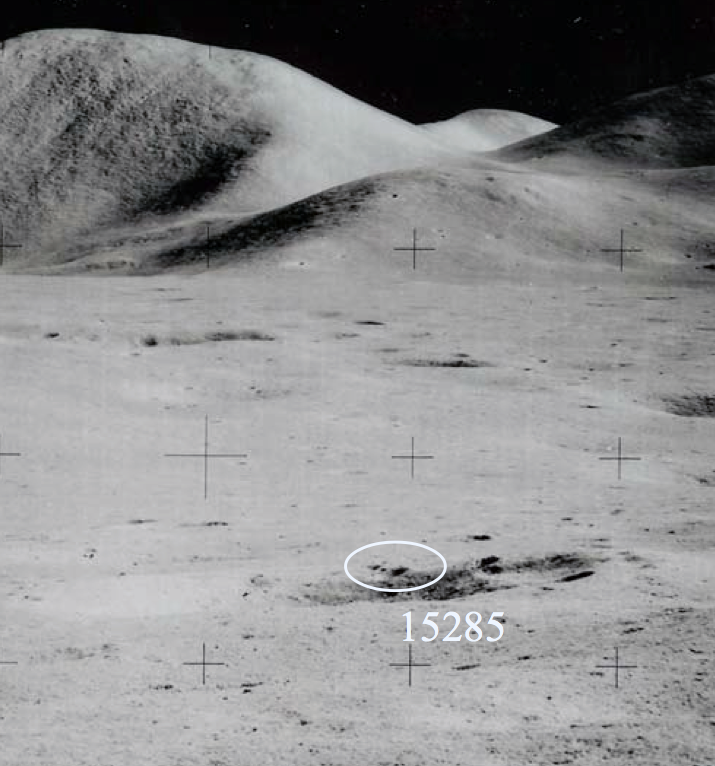
Fact sheet
Samples 15285-15288 (and 15268) were all collected close together and returned in the same bag. They are breccia fragments from the same location as 15265. 15285 consists of all components of the soils in a fragmental, perhaps partly glassy matrix and contains, besides ophitic and intersertal basalts, plagioclase breccias, troctolites, noritic fragments, glass and individual mineral grains. 15285, 15286, 15287, 15288, 15289 and also 15268 were returned together in documented bag 192 and may be pieces of the same material. Rotations 1 and 2 illustrate some of the glass types present in 15285.
The sample weighed 264.2 grams before analysis and has not been dated.
Further details of this and other Apollo samples are here: http://curator.jsc.nasa.gov/lunar/
The Apollo 15 landing site was in the Apennine Highlands, and close to Hadley Rille — a long, narrow winding valley. Approximately 76 kg of lunar material, including soil, rock, core-tube and deep-core samples, were returned to Earth.
This mission was the first flight of the Lunar Roving Vehicle which allowed the astronauts to venture further from the Lunar Module than in previous missions. During three periods of extravehicular activity, or EVA, on July 31st, and August 1st and 2nd, Scott and Irwin completed a record 18 hours, 37 minutes of exploration, travelling 17.5 miles, in the first car that humans had ever driven on the Moon.
Apollo 15 was launched on 26 July 1971.







